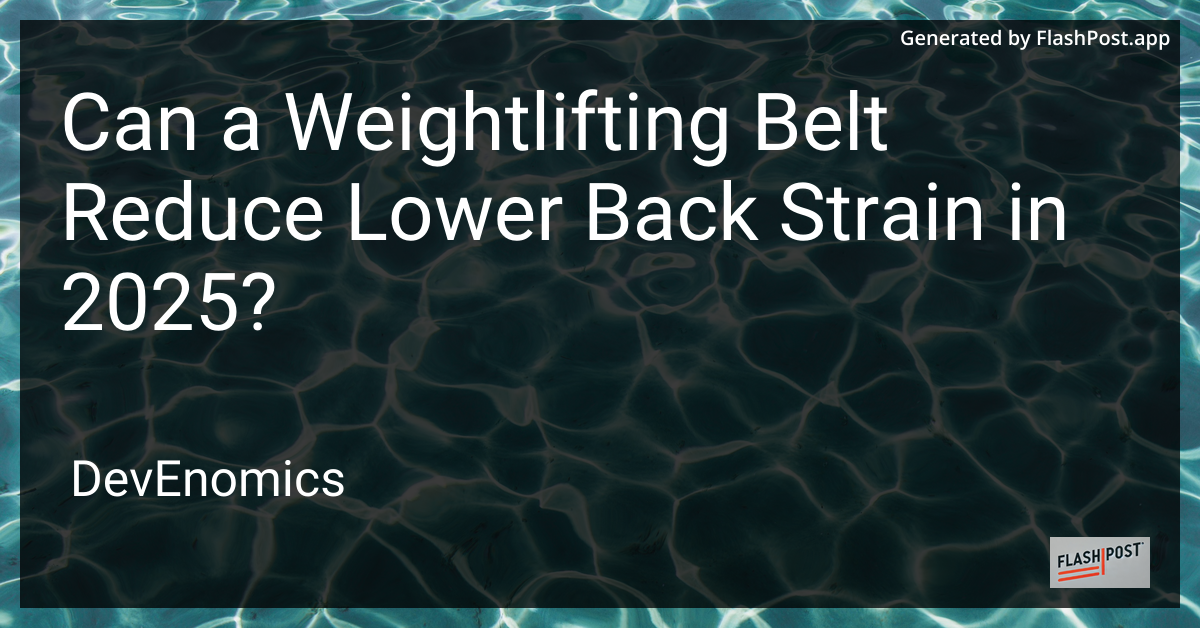

Can a Weightlifting Belt Reduce Lower Back Strain in 2025?
In recent years, the fitness community has witnessed a surge in weightlifting popularity, with enthusiasts continuously seeking ways to improve performance and minimize injury risk. As we enter 2025, a frequently asked question remains relevant: Can a weightlifting belt reduce lower back strain?
Understanding the Purpose of a Weightlifting Belt
A weightlifting belt is a supportive device worn around the torso, primarily used during weightlifting exercises. The belt’s main purpose is to stabilize the core and increase intra-abdominal pressure, thus providing better support for the lower back. With the right technique and knowledge, a weightlifting belt can potentially help decrease the risk of lower back injury during heavy lifts.
How Does a Weightlifting Belt Work?
The mechanics behind a weightlifting belt are quite intriguing. By compressing the abdominal area, the belt enhances core stability which, in turn, supports a neutral spine during lifts. This additional support can help reduce lower back strain, especially when performing exercises like squats and deadlifts.
The belt’s effectiveness largely depends on its proper usage. It’s essential to wear the belt at the right tightness — too tight can restrict breathing, while too loose may provide inadequate support.
Research Insights: What Do the Studies Say?
Over the years, numerous studies have examined the impact of weightlifting belts on lower back strain and overall lifting performance. Recent research into this realm as of 2025 indicates that belts can indeed reduce the compressive forces on the spine.
Research points to the fact that lifters who use belts can lift heavier loads with reduced perceived exertion. This implies a potential decrease in lower back strain during maximal lifts. However, it is crucial to note that long-term dependency on a belt could result in reduced core muscle engagement.
Do Weightlifting Belts Replace Proper Technique?
While a weightlifting belt can offer support and potentially reduce lower back strain, it is not a substitute for proper lifting technique. Lifters should prioritize mastering techniques and strengthening their core muscles to prevent injuries.
In combination with weightlifting belts, exploring other fitness accessories can further enhance performance:
- Check out the top ankle weights 2023 for additional resistance training.
- Understand the advantages of using free weights over machines.
The Bottom Line: Lower Back Strain in 2025
In conclusion, while a weightlifting belt can be a valuable tool in reducing lower back strain, it should complement a comprehensive fitness regimen. Weightlifters should focus on proper form and core strengthening exercises to prevent injury. Additionally, for those interested in more advanced fitness practices, exploring technical prowess like loading a partial model with saved weights in PyTorch can add to one’s skill set.
In 2025, as fitness innovations continue to evolve, continuous learning and adaptation remain paramount for safe and effective weightlifting practice.
